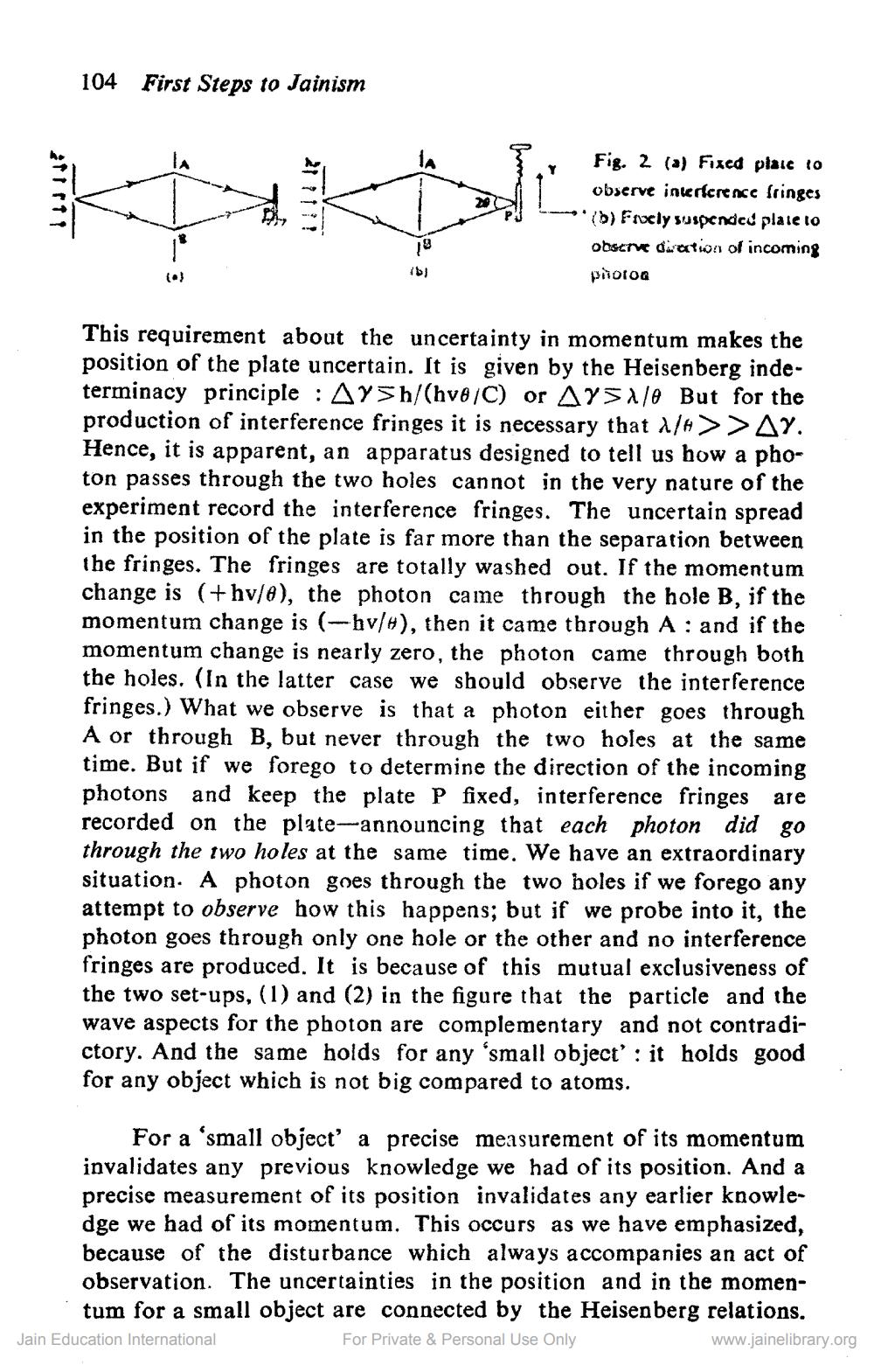________________
104
First Steps to Jainism
Fig. 2 (a) Fixed place to observe interference fringes () Fruly suspended plate to obscrue diration of incoming Piotoa
This requirement about the uncertainty in momentum makes the position of the plate uncertain. It is given by the Heisenberg indeterminacy principle : 4Y5h/(hvo/C) or A75110 But for the production of interference fringes it is necessary that i/A>>AY. Hence, it is apparent, an apparatus designed to tell us how a photon passes through the two holes cannot in the very nature of the experiment record the interference fringes. The uncertain spread in the position of the plate is far more than the separation between the fringes. The fringes are totally washed out. If the momentum change is (+hv/a), the photon came through the hole B, if the momentum change is (-hv/m), then it came through A : and if the momentum change is nearly zero, the photon came through both the holes. (In the latter case we should observe the interference fringes.) What we observe is that a photon either goes through A or through B, but never through the two holes at the same time. But if we forego to determine the direction of the incoming photons and keep the plate P fixed, interference fringes are recorded on the plate--announcing that each photon did go through the two holes at the same time. We have an extraordinary situation. A photon goes through the two holes if we forego any attempt to observe how this happens; but if we probe into it, the photon goes through only one hole or the other and no interference fringes are produced. It is because of this mutual exclusiveness of the two set-ups, (1) and (2) in the figure that the particle and the wave aspects for the photon are complementary and not contradictory. And the same holds for any 'small object': it holds good for any object which is not big compared to atoms.
For a 'small object' a precise measurement of its momentum invalidates any previous knowledge we had of its position. And a precise measurement of its position invalidates any earlier knowledge we had of its momentum. This occurs as we have emphasized, because of the disturbance which always accompanies an act of observation. The uncertainties in the position and in the momen
tum for a small object are connected by the Heisenberg relations. Jain Education International For Private & Personal Use Only
www.jainelibrary.org




